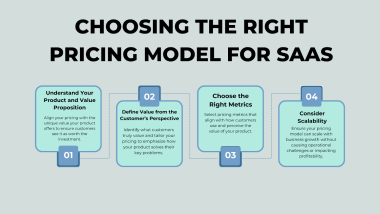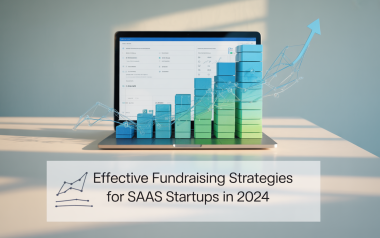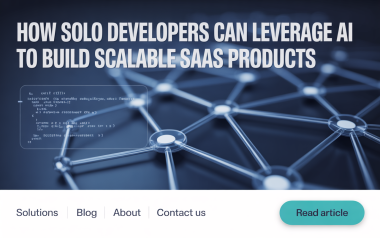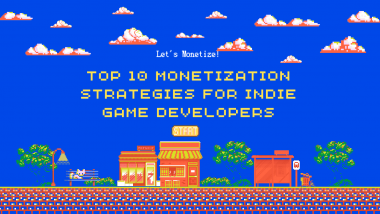Building a SaaS product as a solo developer requires wearing multiple hats while managing limited resources, time, and technical capabilities efficiently. Solo SaaS founders face unique challenges including idea validation, end-to-end development responsibilities, and customer acquisition—all without the support of specialized team members.
Key Takeaways
- Idea validation through market research and MVP development prevents wasting resources on unwanted features
- Adopting agile methodologies and leveraging cloud platforms simplifies development and deployment processes
- Strategic use of third-party APIs for non-core features saves significant development time
- Content marketing and community engagement provide cost-effective customer acquisition channels
- Continuous feedback collection from users helps improve product-market fit and boosts retention
Understanding the Solo SaaS Challenge
The path to creating a successful SaaS product alone is filled with unique obstacles that differ from team-based approaches. Solo developers must balance technical work with business operations, marketing efforts, and customer support without specialized help.
This multifaceted responsibility can quickly become overwhelming without proper planning and resource management. The lack of diverse perspectives can also lead to blind spots in product development and strategic decision-making.
Validating Your SaaS Idea Effectively
Idea validation stands as the critical first step before investing months of development effort. Without proper validation, you risk building features nobody wants or addressing nonexistent problems.
Start by implementing these validation techniques:
- Conduct surveys and interviews with potential customers in your target market
- Analyze existing competitors to identify gaps and opportunities
- Create landing pages that describe your proposed solution to gauge interest
- Build a waitlist to measure demand before full development
Tools like Typeform or Google Forms can help collect structured feedback efficiently. The goal is gathering actionable insights to refine your concept before heavy investment.
Streamlining Development and Deployment
As a solo developer, your technical approach needs to maximize efficiency while maintaining quality. Focusing on a narrow initial scope helps prevent feature bloat that can delay launch indefinitely.
Consider these development strategies:
- Choose frameworks and languages you’re already familiar with to reduce learning curves
- Implement CI/CD pipelines early to automate testing and deployment
- Utilize cloud platforms like AWS or DigitalOcean that offer managed services
- Break development into small, manageable iterations with clear milestones
“Defining a clear, narrow scope for your SaaS app helps avoid feature bloat and reduces development time,” according to SaaS Academy. This focused approach keeps you from getting lost in endless development cycles.
Leveraging Third-Party Services
Not everything in your SaaS product needs to be built from scratch. Strategic use of third-party APIs can dramatically reduce development time for standard features.
Consider outsourcing these common components:
- Authentication systems (Auth0, Firebase Authentication)
- Payment processing (Stripe, PayPal)
- Email delivery services (SendGrid, Mailgun)
- Analytics platforms (Google Analytics, Mixpanel)
- Customer support tools (Intercom, Zendesk)
This approach lets you focus development efforts on your core value proposition while relying on proven services for standard functionality. The time savings can be substantial, often cutting months from your development timeline.
Customer Acquisition on a Budget
Building a great product is only half the battle—getting customers to discover and try it presents another major challenge. Solo founders must adopt cost-efficient marketing approaches that don’t drain limited resources.
Effective low-budget acquisition strategies include:
- Content marketing through helpful blog posts, tutorials, and case studies
- Active participation in relevant communities (Reddit, Indie Hackers, Product Hunt)
- Strategic use of free tiers or limited-time trials to reduce adoption friction
- Building in public to generate interest and establish credibility
- Developing referral programs that incentivize word-of-mouth growth
“Starting content marketing early by creating blog posts, tutorials, or case studies that address your target audience’s problems showcases your expertise,” notes SaaS Academy. This content-first approach builds authority while driving organic traffic.
Balancing Development and Marketing
One of the toughest challenges for solo founders is deciding how to split time between improving the product and promoting it. This constant balancing act requires intentional planning and time management.
I recommend allocating fixed time blocks for both activities rather than handling them reactively. For example, dedicating mornings to development and afternoons to marketing ensures neither area gets neglected.
Setting up automated workflows for both technical and marketing processes can free up valuable time. Tools like Zapier can connect your various systems to reduce manual work across both domains.
Tools to Boost Solo SaaS Success
The right tools can multiply your effectiveness as a solo developer. These solutions help automate repetitive tasks and fill capability gaps without adding team members.
Essential tools for solo SaaS founders include:
- Development: React, Node.js, Firebase, Ruby on Rails
- Deployment: AWS Elastic Beanstalk, DigitalOcean, GitHub Actions
- Marketing: Buffer, Mailchimp, Google Analytics, Canva
- Customer Support: Intercom, Zendesk, Hotjar
- Productivity: Notion, Trello, Toggl
Cloud platforms like AWS and Azure offer scalable infrastructure that grows with your user base. According to Dev.to, these services simplify deployment and maintenance, letting solo developers focus more on core product development.
Learning from Successful Solo SaaS Founders
Studying the journeys of successful solo founders provides valuable insights into what works. Many successful single-person SaaS businesses began with a laser focus on solving specific problems for niche markets.
Common patterns among successful solo SaaS ventures include starting small, embracing iteration based on user feedback, and focusing on sustainability rather than rapid growth. These founders typically prioritize profitability over funding, creating businesses that generate real income without external investment pressures.
Conclusion
Building a successful SaaS product as a solo developer presents unique challenges but remains entirely possible with the right approach. The key lies in strategic resource allocation—knowing where to invest your limited time and when to leverage existing solutions.
By validating ideas thoroughly, maintaining a focused development scope, leveraging third-party services, and implementing lean marketing approaches, solo founders can create viable SaaS products that find their market. The journey requires patience and persistence, but the freedom and potential rewards of building your own successful SaaS business make the effort worthwhile.






